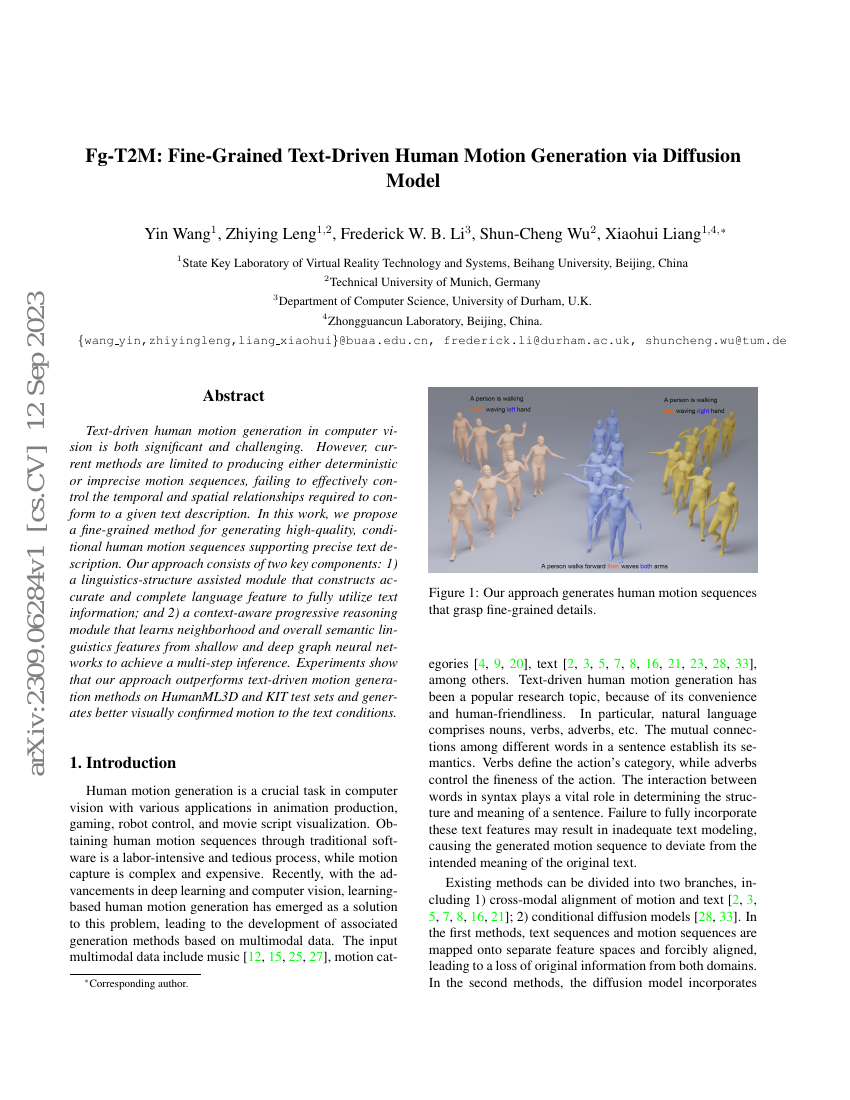Command Palette
Search for a command to run...
Fg-T2M: Fine-Grained Text-Driven Human Motion Generation via Diffusion Model
Yin Wang Zhiying Leng Frederick W. B. Li Shun-Cheng Wu Xiaohui Liang

Abstract
Text-driven human motion generation in computer vision is both significant and challenging. However, current methods are limited to producing either deterministic or imprecise motion sequences, failing to effectively control the temporal and spatial relationships required to conform to a given text description. In this work, we propose a fine-grained method for generating high-quality, conditional human motion sequences supporting precise text description. Our approach consists of two key components: 1) a linguistics-structure assisted module that constructs accurate and complete language feature to fully utilize text information; and 2) a context-aware progressive reasoning module that learns neighborhood and overall semantic linguistics features from shallow and deep graph neural networks to achieve a multi-step inference. Experiments show that our approach outperforms text-driven motion generation methods on HumanML3D and KIT test sets and generates better visually confirmed motion to the text conditions.
Benchmarks
| Benchmark | Methodology | Metrics |
|---|---|---|
| motion-synthesis-on-humanml3d | Fg-T2M | Diversity: 9.278 FID: 0.243 Multimodality: 1.614 R Precision Top3: 0.783 |
| motion-synthesis-on-kit-motion-language | Fg-T2M | Diversity: 10.93 FID: 0.571 Multimodality: 1.019 R Precision Top3: 0.745 |
Build AI with AI
From idea to launch — accelerate your AI development with free AI co-coding, out-of-the-box environment and best price of GPUs.